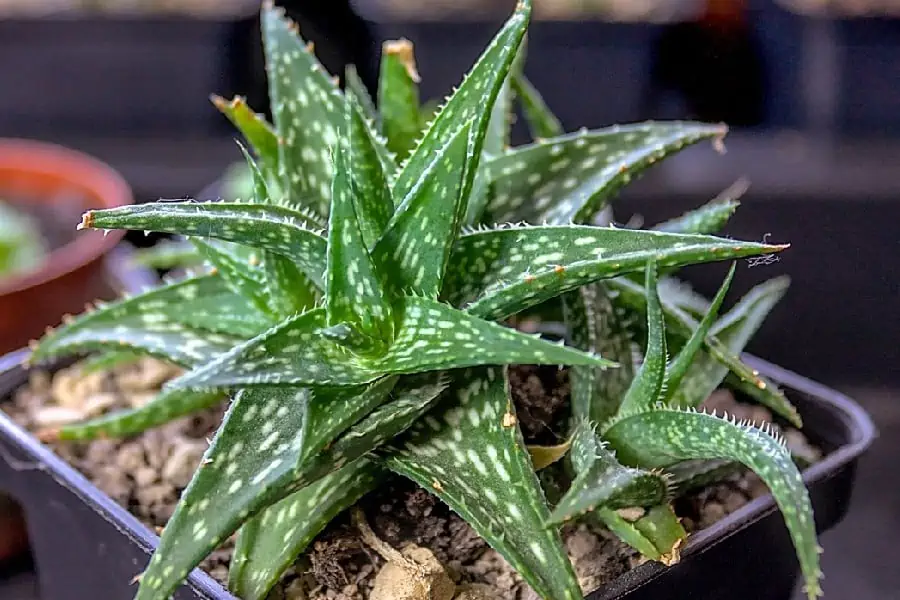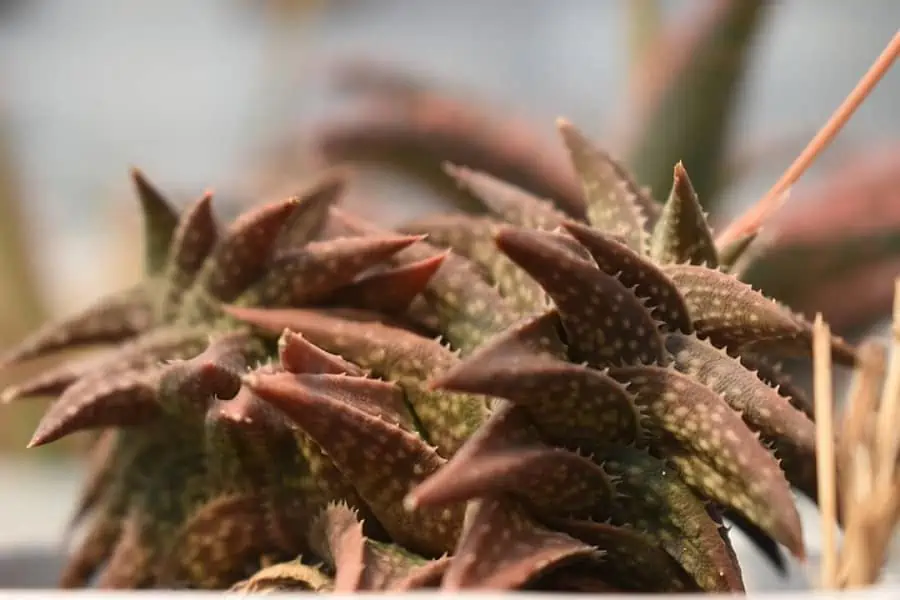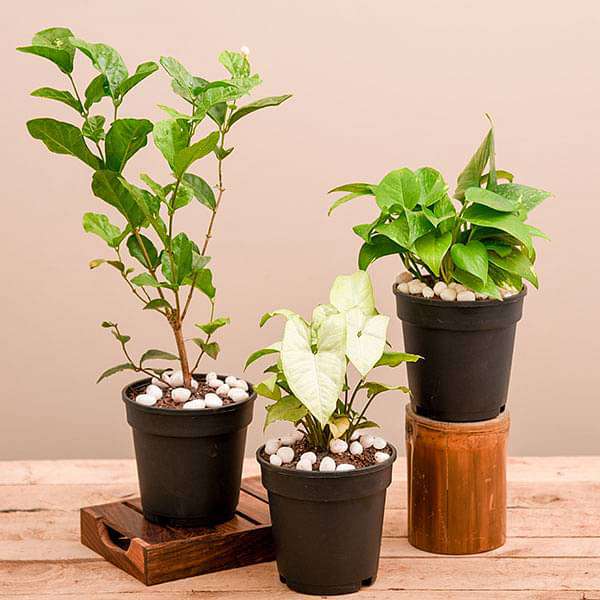Aloe descoingsii grows in densely packed clumps. It is widely known as the smallest of the Aloe plants as it has no stem and no considerable vertical length. The tapered leaves are dark green and have white warts all over their surface.
They also have white teeth along the edges. The blooming season lasts from spring to summer, when red or yellow flowers grow on peduncles about 6 inches tall. It is native to Madagascar and grows very slowly.
How to Care for Aloe descoingsii
Light
The Aloe descoingsii grows best in bright sunlight and prefers light shade. In the hotter months, it is best to protect the plant from harsh, direct sunlight and reflected heat. The plant does not do too well when the light is not adequate. This can lead to poor growth of the plant and it may not flower.
The leaves of the Aloe descoingsii, which makes this plant unique will turn the distinct red and orange color only when they get the ideal light. However, the leaves may also turn red when the temperature is very cold or the plant does not have sufficient water, which are signs of stress.
Watering
The Aloe descoingsii needs regular watering during the summer months; however, the watering needs to reduce during the colder months, when the plant enters dormancy. During the winter season or when the night temperatures are less than 50°F (10°C), the plant remains dry and does not require watering.
The plant needs a consistent but occasional watering routine and you must ensure that the soil is soaked properly but only when it has completely dried out. The Aloe descoingsii requires good ventilation and just sufficient watering. Poor ventilation and overwatering can cause problems, especially when the weather is very humid, cool or dull.
Soil
The Aloe descoingsii is a plant that grows mostly in drier climates and is adapted to those conditions. It prefers porous, well-draining soil. You can use an organic cactus mix or sandy soil with large particles to grow the succulent. The plant does not do well in wet or soggy soils.

Fertilizing
Applying light fertilizer helps to boost the growth of the Aloe descoingsii succulent. The plant must be fertilized during its growing season. Use a fertilizer that is specifically meant for succulents and cacti i.e., a fertilizer that is high in potassium but low level of diluted nitrogen, which includes all the trace elements and micronutrients. The fertilizer must be diluted to half the concentration and should be applied a couple of inches away from the plant’s base.
Climate
The Aloe descoingsii succulent likes warmth and can grow in minimum winter temperatures of up to 41°F (5°C). However, they cannot withstand freezing temperatures. The plant grows best outdoors in USDA Hardiness zones 9b to 11. The plant grows best when it gets 80% to 100% sunlight. During the winter months, the plant should be protected or brought indoors.
Pests and Diseases
Aloe descoingsii are generally healthy plants and are not affected by any diseases. However, overwatering the plants can lead to fungal diseases. The plants may be infested by pests like aphids, snails, slugs and white scale but these can be prevented by maintaining optimal growing conditions.

Propagating Aloe descoingsii
You can propagate Aloe descoingsii using the following methods.
Pups
For propagation through pups or offsets, you can go through the following steps.
- Remove the pup from the parent plant by gently tugging it out. Make sure you retain the roots of each pup.
- Keep the pup aside in some shade for a few days so that a callus can form.
- Take a small pot and fill it with some soil mix.
- Plant the offset into the soil and keep the pot in a spot that receives a good amount of sunlight. Water it each time the soil becomes dry.
- Once the pup grows a bit, you can repot it or plant it outdoors.
Seeds
You can follow these steps for growing the plant from seeds.
- Figure out the requirements of your respective species.
- Sow the seeds in a pot filled with the soil mix.
- Sprinkle some water in the soil and wrap the pot with some plastic.
- Keep the pot in a warm location with indirect sunlight.
- Once you notice the seedlings forming within a month, take the plastic off.







Reviews
There are no reviews yet.